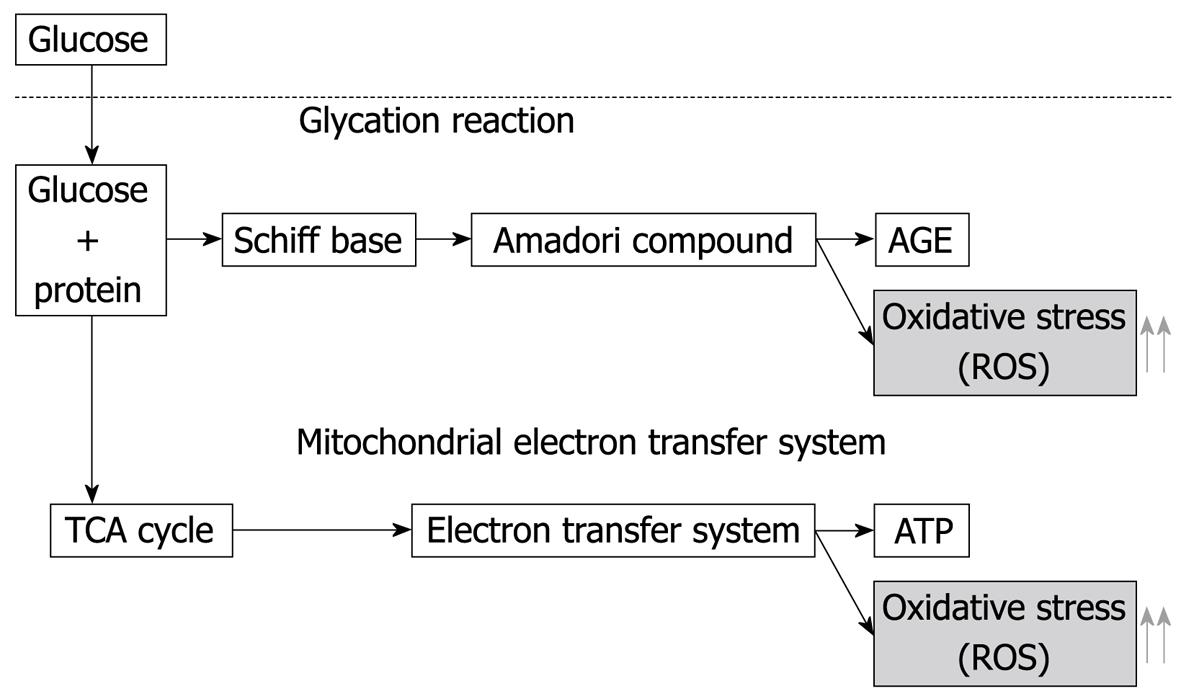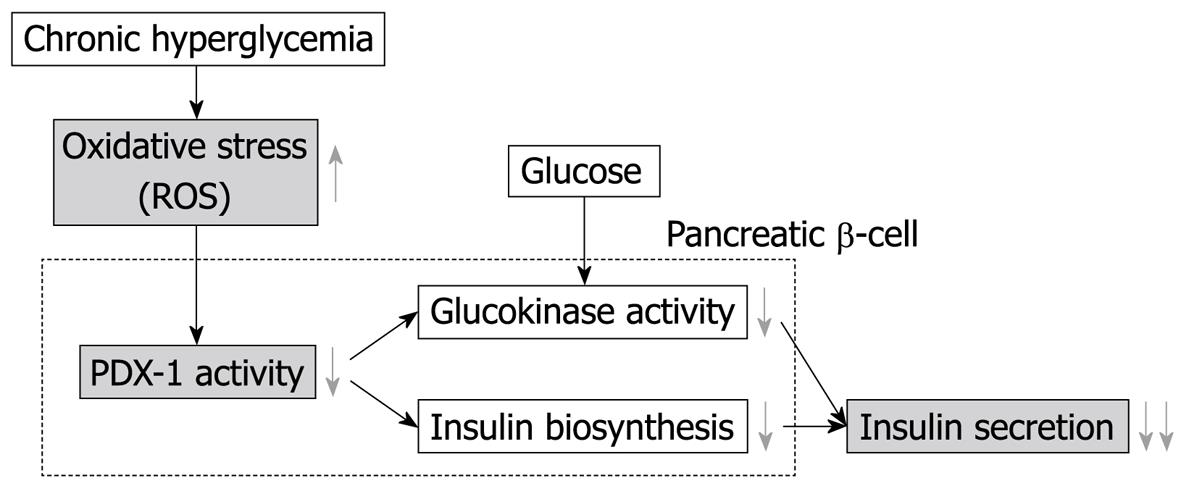Copyright
©2009 The WJG Press and Baishideng.
World J Gastroenterol. Sep 7, 2009; 15(33): 4137-4142
Published online Sep 7, 2009. doi: 10.3748/wjg.15.4137
Published online Sep 7, 2009. doi: 10.3748/wjg.15.4137
Figure 1 Increase in oxidative stress in the diabetic state.
Acceleration of glycation response and the intramitochondrial electron transfer system was detected in the diabetic state, causing oxidative stress as the responses accelerated. Black arrows indicate pathway, grey arrows indicate increase or decrease. AGE: Advanced glycosylation end products; ROS: Reactive oxygen species; TCA cycle: Tricarboxylic acid cycle; ATP: Adenosine tri-phosphate.
Figure 2 The mechanism of insulin secretion reduction due to glucose toxicity.
DNA binding capacity of PDX-1 decreases as a result of oxidative stress caused by hyperglycemia, while insulin biosynthesis and secretion also decrease. Black arrows indicate pathway, grey arrows indicate increase or decrease. PDX-1: Pancreatic duodenal homeobox-1.
- Citation: Kawahito S, Kitahata H, Oshita S. Problems associated with glucose toxicity: Role of hyperglycemia-induced oxidative stress. World J Gastroenterol 2009; 15(33): 4137-4142
- URL: https://www.wjgnet.com/1007-9327/full/v15/i33/4137.htm
- DOI: https://dx.doi.org/10.3748/wjg.15.4137










